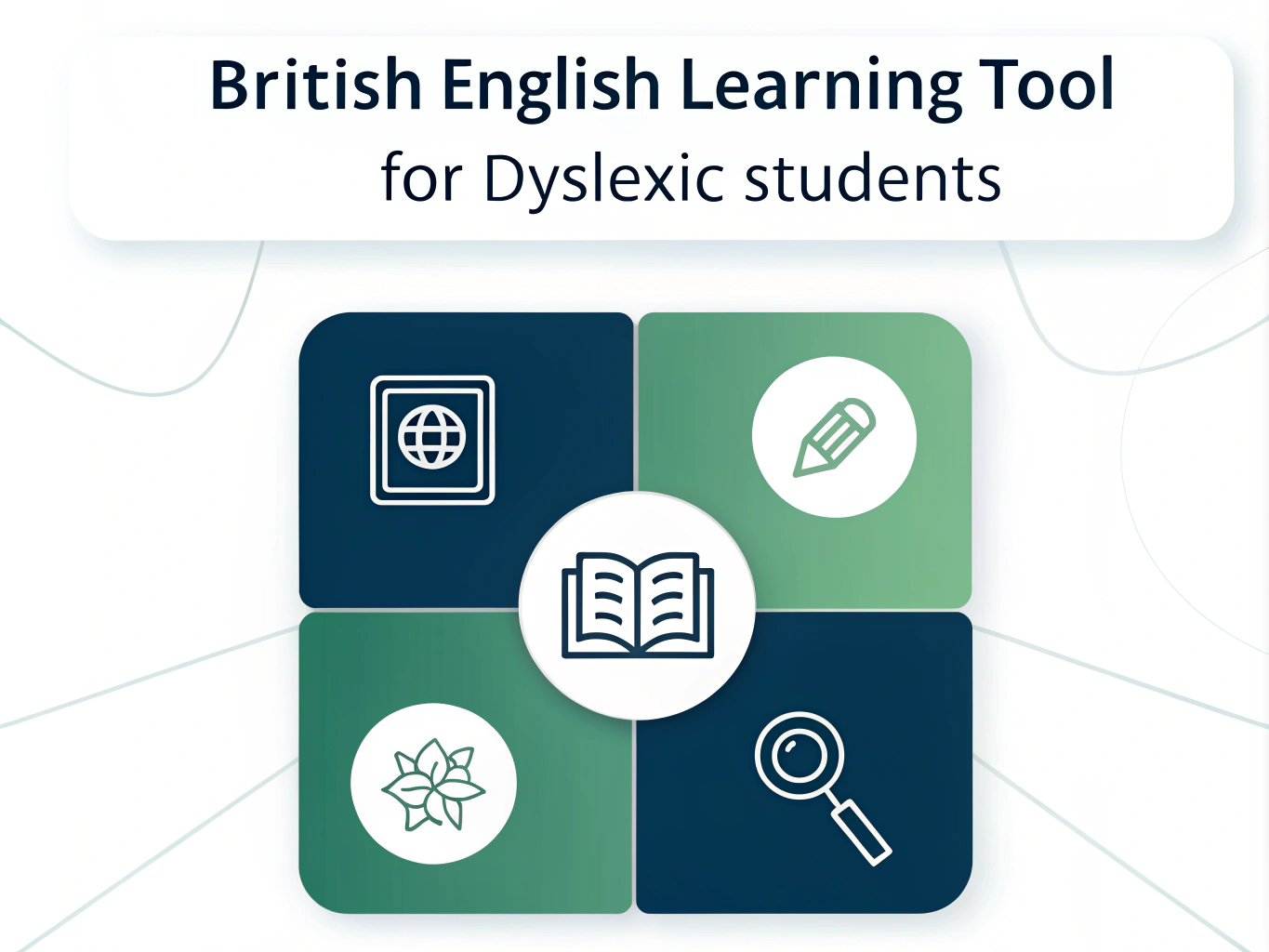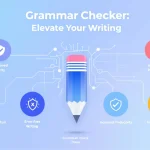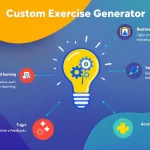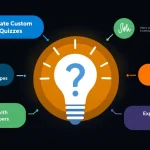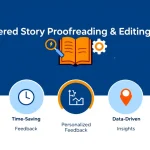British English Learning for Dyslexic Students
Is this tool helpful?
How to Use the British English Spelling and Grammar Improvement Tool for Dyslexic Students
This innovative tool is designed to help dyslexic students enhance their British English spelling and grammar skills. To use the tool effectively, follow these simple steps:
- Enter your age: In the “Age of the student” field, input your current age. For example, you might enter “17” if you’re a 17-year-old student or “21” if you’re a university student.
- Specify your English proficiency: In the “Current level of English proficiency” field, describe your current English language skills. You could enter “intermediate” if you have a good grasp of basic concepts but struggle with more complex rules, or “advanced” if you’re proficient but looking to refine your skills further.
- Detail your challenges (optional): In the “Specific challenges or areas of difficulty” field, describe any particular issues you face related to dyslexia and English learning. For instance, you might write “Difficulty with silent letters and homophones” or “Struggle with punctuation rules and sentence structure.”
- Submit your information: Click the “Get Personalized Learning Plan” button to generate your tailored learning strategy.
Once you’ve submitted your information, the tool will process your input and generate a personalized learning plan. This plan will appear in the result section below the form, providing you with targeted strategies, exercises, and resources to improve your British English spelling and grammar skills while accommodating your dyslexia-related challenges.
Empowering Dyslexic Learners: Your Gateway to British English Mastery
Welcome to our cutting-edge British English Spelling and Grammar Improvement Tool, specifically designed for students with dyslexia. This innovative resource serves as a bridge between the unique learning needs of dyslexic individuals and the intricacies of British English language conventions.
Our tool’s primary purpose is to provide personalized, dyslexia-friendly strategies for mastering British English spelling and grammar. By taking into account your age, current proficiency level, and specific challenges, it crafts a tailor-made learning plan that addresses your individual needs and learning style.
Key Benefits of Our Tool
- Personalization: Receive a learning plan customized to your age, proficiency level, and specific dyslexia-related challenges.
- Dyslexia-Friendly Approach: Access strategies and exercises designed with dyslexic learners in mind, making the learning process more accessible and effective.
- British English Focus: Learn the nuances of British English spelling and grammar, distinguishing it from other English variants.
- Comprehensive Coverage: Get a well-rounded learning plan that covers spelling rules, grammar concepts, and practical exercises.
- Resource Recommendations: Discover helpful tools, apps, and resources specifically chosen to support your learning journey.
Transforming Challenges into Opportunities: How Our Tool Addresses Your Needs
Our British English Spelling and Grammar Improvement Tool is more than just a learning aid; it’s a comprehensive solution designed to tackle the specific challenges faced by dyslexic students in mastering British English. Here’s how it addresses your needs and solves common problems:
1. Overcoming Spelling Hurdles
Dyslexic students often struggle with spelling, especially when it comes to the quirks of British English. Our tool provides targeted strategies to help you conquer these challenges:
- Phonetic Approaches: Learn techniques to break down words into phonetic components, making them easier to remember and spell correctly.
- Mnemonic Devices: Discover creative memory aids tailored to British English spelling conventions.
- Visual Learning Strategies: Explore methods that leverage visual memory to reinforce correct spelling patterns.
2. Navigating Grammar Complexities
Grammar rules can be particularly daunting for dyslexic learners. Our tool simplifies these concepts and provides clear, structured guidance:
- Rule Simplification: Break down complex grammar rules into manageable, easy-to-understand chunks.
- Visual Aids: Utilize diagrams, charts, and color-coding to make grammar concepts more accessible.
- Practical Applications: Learn how to apply grammar rules in real-life writing situations.
3. British vs. American English Clarification
Distinguishing between British and American English can be challenging. Our tool helps you master the nuances of British English:
- Spelling Differences: Learn the key spelling variations between British and American English (e.g., “colour” vs. “color”, “centre” vs. “center”).
- Vocabulary Distinctions: Understand uniquely British terms and expressions.
- Punctuation Variances: Master the subtle differences in punctuation usage between British and American English.
Example: Tailored Learning Plan
Let’s consider a 16-year-old student with intermediate English proficiency who struggles with spelling long words and distinguishing between similar-sounding words. Our tool might generate a learning plan like this:
- Spelling Strategy: Implement the “Break it Down” technique for long words. Practice breaking “accommodation” into smaller parts: ac-com-mo-da-tion.
- Homophone Mastery: Use the “Visual Association” method to differentiate between commonly confused words like “their,” “there,” and “they’re.” Create visual flashcards with associated images for each word.
- British English Focus: Learn the “-our” vs. “-or” rule for words like “colour,” “favour,” and “humour.” Create a list of common “-our” words and practice using them in sentences.
- Grammar Exercise: Practice using the present perfect tense, which is more common in British English. Complete gap-fill exercises with sentences like “I ____ (have/has) just finished my homework.”
- Resource Recommendation: Try the “Dyslexia Spell-Up” app, which uses a multisensory approach to improve spelling skills.
Practical Applications: Bringing British English to Life
Our British English Spelling and Grammar Improvement Tool isn’t just about theoretical learning; it’s designed to help you apply your skills in real-world scenarios. Here are some practical applications and use cases that illustrate how this tool can transform your English language abilities:
1. Academic Writing Enhancement
For students preparing essays or research papers, our tool provides invaluable support:
- Proper Punctuation: Learn to use semicolons and colons correctly in academic writing, a common challenge for dyslexic students.
- Formal Language: Master the use of formal British English expressions and avoid colloquialisms in academic contexts.
- Citation Styles: Understand the nuances of British citation styles, which may differ from American formats.
Example: A university student using our tool might receive guidance on structuring a thesis statement using proper British English conventions, along with exercises to practice formal academic phrases.
2. Professional Communication Skills
For those entering the workforce or improving their professional skills, our tool offers targeted assistance:
- Email Etiquette: Learn the appropriate salutations, closings, and tone for professional emails in British English.
- CV and Cover Letter Writing: Master the specific terminology and formatting expected in British CVs and cover letters.
- Presentation Skills: Improve your ability to articulate ideas clearly using correct British English pronunciation and grammar.
Example: A job seeker might receive a customized list of common British business terms and phrases, along with exercises to practice using them in cover letters and interview responses.
3. Social Media and Digital Communication
In today’s digital age, proficiency in online communication is crucial:
- Hashtag Literacy: Learn to create and use hashtags effectively, incorporating British English spelling and conventions.
- Concise Writing: Practice crafting clear, grammatically correct tweets and social media posts within character limits.
- British Internet Slang: Familiarize yourself with common British internet abbreviations and their appropriate usage.
Example: A student might receive a set of exercises to practice writing engaging tweets about current events, using proper British English spelling and incorporating relevant hashtags.
4. Literature and Creative Writing
For those interested in exploring British literature or developing their creative writing skills:
- Poetic Devices: Learn and practice using alliteration, assonance, and other poetic devices common in British poetry.
- Dialogue Writing: Master the nuances of writing authentic British dialogue, including regional dialects and colloquialisms.
- Descriptive Writing: Enhance your ability to craft vivid descriptions using rich, varied British English vocabulary.
Example: An aspiring writer might receive exercises to practice describing a typical British scene (e.g., a rainy day in London) using sensory details and idiomatic expressions.
5. Travel and Cultural Exchange
For students planning to travel or study in the UK:
- Regional Variations: Learn about different British accents and regional vocabulary differences.
- Cultural References: Understand and use common British cultural references and idioms appropriately.
- Practical Vocabulary: Master essential phrases for navigating daily life in the UK, from public transport to ordering in restaurants.
Example: A student preparing for a study abroad program in Edinburgh might receive a tailored list of Scottish English terms and pronunciation guides, along with exercises to practice common travel-related conversations.
Frequently Asked Questions
1. How does this tool differ from general English learning resources?
Our tool is specifically designed for dyslexic learners focusing on British English. It provides personalized strategies that take into account the unique challenges faced by dyslexic students, such as difficulty with phonological processing or visual stress. Unlike general resources, it offers targeted exercises and techniques that leverage the strengths often associated with dyslexia, such as strong visual thinking and creativity.
2. Can this tool help with pronunciation as well as spelling and grammar?
While our primary focus is on spelling and grammar, the tool does incorporate elements of pronunciation, particularly where it affects spelling in British English. For example, it might provide strategies for remembering the correct spelling of words with silent letters, which is a common feature in British English (e.g., “knight,” “psalm”).
3. Is this tool suitable for all ages?
Yes, our tool is designed to cater to learners of all ages. By inputting your age and proficiency level, you receive a learning plan tailored to your specific needs and cognitive development stage. Whether you’re a young student or an adult learner, the tool adapts its strategies and content accordingly.
4. How often should I use this tool to see improvement?
For optimal results, we recommend using the tool to generate a new learning plan every 4-6 weeks. This allows you to track your progress and receive updated strategies as your skills improve. However, the exercises and resources provided in each plan should be practiced regularly, ideally for at least 15-20 minutes daily.
5. Can this tool help with specific learning goals, such as preparing for exams?
Absolutely! When you input your specific challenges or areas of difficulty, you can mention particular learning goals, such as preparing for GCSE English or IELTS exams. The tool will then provide strategies and exercises tailored to these specific objectives, while still accounting for your dyslexia-related needs.
6. How does the tool address the emotional aspects of learning with dyslexia?
Our tool recognizes that dyslexic learners often face emotional challenges such as low self-esteem or anxiety related to their learning differences. The personalized plans include positive reinforcement techniques and celebrate small victories to boost confidence. Additionally, the tool provides strategies for managing stress and staying motivated throughout the learning process.
7. Can I use this tool alongside other dyslexia support services?
Certainly! Our tool is designed to complement other dyslexia support services you may be receiving, such as one-on-one tutoring or school-based interventions. You can share your personalized learning plan with your teachers or tutors to ensure a coordinated approach to your English language development.
8. Does the tool provide support for handwriting as well as typing?
While our primary focus is on spelling and grammar, the tool does offer some strategies that can be applied to handwriting. This includes techniques for visualizing word shapes and breaking down complex words, which can be helpful when writing by hand. However, for comprehensive handwriting support, we recommend combining our tool with specialized dyslexia handwriting programs.
9. How does the tool stay updated with current British English usage?
Our team of language experts and educators regularly updates the tool to reflect current British English usage, including new vocabulary, evolving grammar conventions, and changes in formal vs. informal language use. This ensures that the strategies and exercises you receive are always relevant and up-to-date.
10. Can this tool help with understanding British cultural references in language?
Yes, our tool incorporates aspects of British culture that are relevant to language use. This includes common idioms, cultural references in literature, and appropriate use of formal vs. informal language in different social contexts. Understanding these cultural nuances is crucial for truly mastering British English, and our tool provides explanations and practice exercises to help you navigate these aspects of the language.
Important Disclaimer
The calculations, results, and content provided by our tools are not guaranteed to be accurate, complete, or reliable. Users are responsible for verifying and interpreting the results. Our content and tools may contain errors, biases, or inconsistencies. We reserve the right to save inputs and outputs from our tools for the purposes of error debugging, bias identification, and performance improvement. External companies providing AI models used in our tools may also save and process data in accordance with their own policies. By using our tools, you consent to this data collection and processing. We reserve the right to limit the usage of our tools based on current usability factors. By using our tools, you acknowledge that you have read, understood, and agreed to this disclaimer. You accept the inherent risks and limitations associated with the use of our tools and services.
